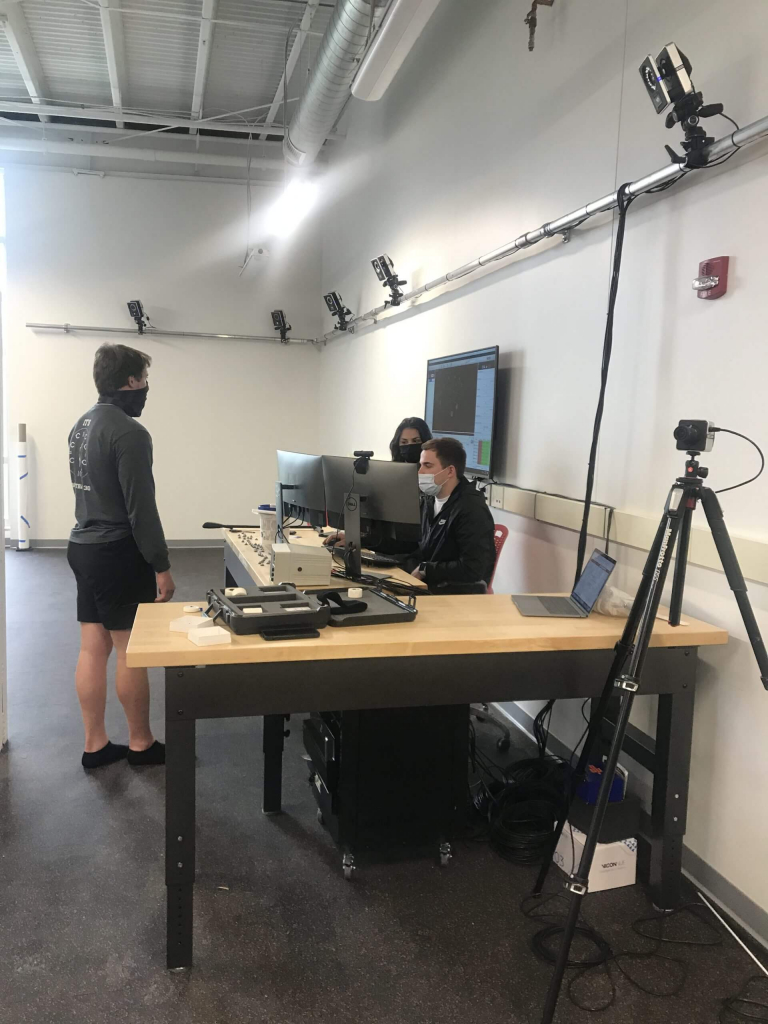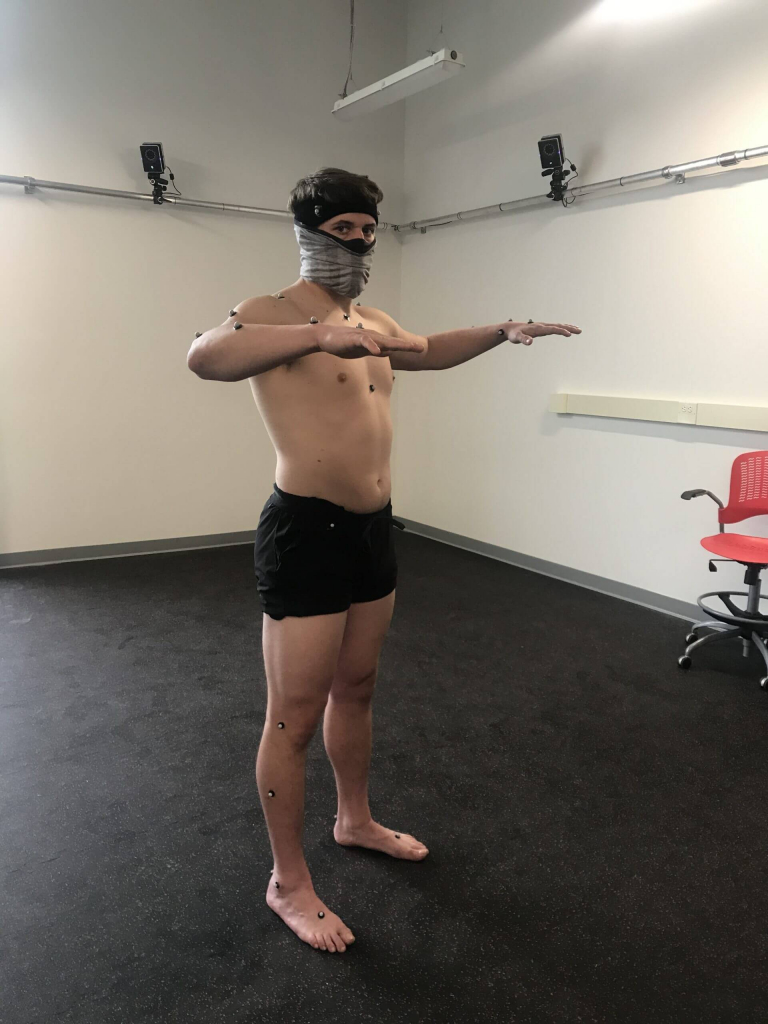Otterbein Biomechanics Institute Captures Motion for Forward-Thinking
Posted Apr 22, 2021
The Biomechanics Institute might look like an ordinary room at The Point at Otterbein University, but the data collected and lessons learned are far from ordinary. The new learning laboratory, equipped with cameras and specialized software to study movement, is the result of an interdisciplinary collaboration between the Departments of Health and Sport Sciences and Engineering.
“There are some things you just can’t see in real time,” said Shelley Payne, associate professor of health and sport sciences. “Our cameras and software allow us to see someone move in all planes of motion and slow it down to fully understand how internally a person is actually moving.”
The camera set-up encompasses the entire room, giving researchers the ability to study motions that require a large space, such as throwing, jumping, and running. Similar to movie and videogame motion-capture, body markers are placed onto the subject at key points, such as joints and major muscle groups. From there, the software creates a 3D “stickman” model that can be manipulated, providing a new perspective on a particular motion or area of the body.
Students interested in physical therapy, occupational therapy, and physician assistant careers benefit from seeing beyond the skin.
For Payne, this is a major stepping-stone from where her research began.
“When the motion-capture room was housed in the Department of Health and Sport Sciences’ old facilities, we only had room for one treadmill and cameras that were able to only produce a 2D visual. When we moved to The Point during the building’s renovation, it opened new opportunities for our students to see the complexities we study in new ways,” she said.
Junior allied health major Lauren Rumbalski will be working in the lab starting this summer. She is looking forward to studying lower back movement and how she can apply those findings to injury preventions.

“Lower back injuries are some of the most common we see every day in patient handling,” she said. “I want to see how the spine moves and then add interventions to see how that movement changes. Hopefully, this can help healthcare practitioners with moving their patients as well as avoiding injuries themselves.”
Rumbalski loves how the Biomechanics Institute lab provides ways for students to receive hands-on learning possibilities as an undergrad that she may have not seen this early at another university.
“Having this at Otterbein really gives us a leg-up, no pun intended, in graduate school prep work. We’re showing we have direct innovation experience with cutting-edge technology. That’s a huge plus on our transcripts and resumes,” she said.
Innovation is the foundation of the work being done at The Point at Otterbein University. The Biomechanics Institute is no exception. Following the overall thematic vision of the space, the lab is bringing together students and faculty from across disciplines.

Assistant Professor of Engineering Elena Caruthers uses the lab as a way for her engineering students to look at the body motion findings in more analytical terms, developing data interpretation skills and looking at how they can apply that information to new technology.
“This is a pivotal point in a student’s career,” Caruthers said. “Having exposure to a collaborative, innovative space is crucial to create professionals who think differently and communicate ideas clearly in technical ways as well as in layman’s terms.”
The Biomechanical Institute is a perfect example of how Otterbein is dedicated to bringing together liberal arts and STEM to innovate for the future common good.